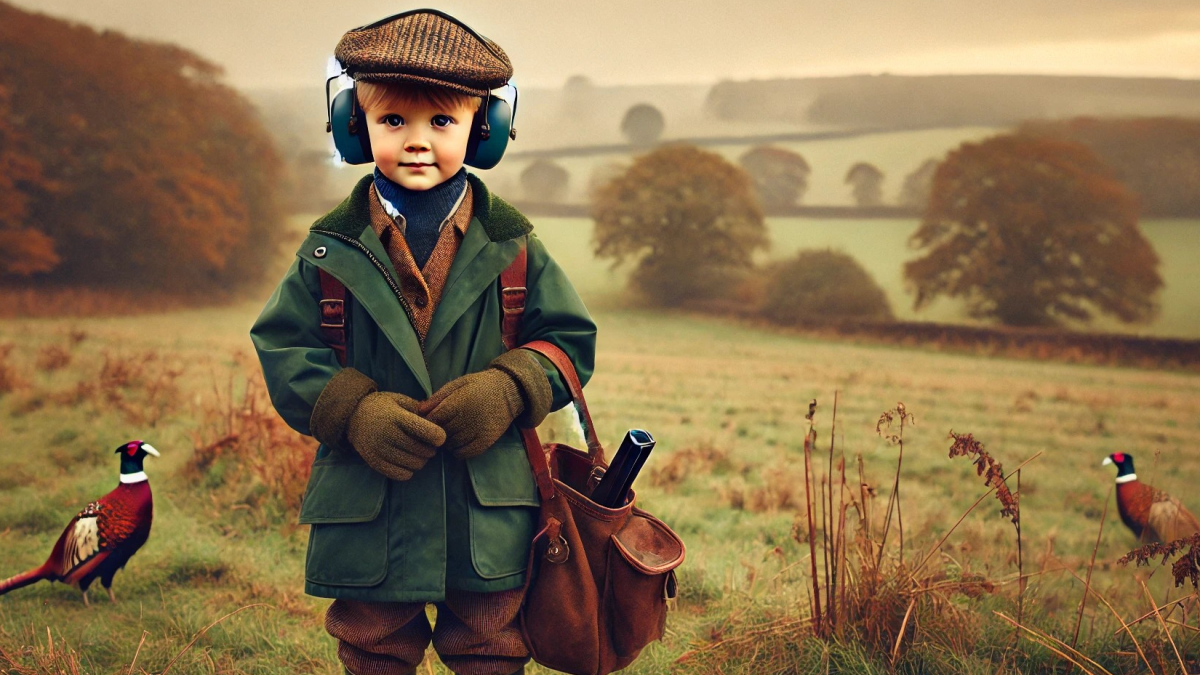Taking Children on a Driven Syndicate Pheasant Shoot: A Guide to Safety, Learning, and Tradition

Taking children on a driven pheasant shoot introduces them to countryside traditions, field sports, and the values of respect and responsibility.
Taking Children on a Driven Syndicate Pheasant Shoot: A Guide to Safety, Learning, and Tradition
A driven syndicate pheasant shoot is an ideal setting to teach children about the countryside, the ethics of sustainable food sourcing, and the skills involved in field sports. With careful planning, children can safely participate and learn about the traditions that make shooting a valued part of rural life.
Safety First: Guidelines for a Successful Shoot Day with Children
Safety is paramount when including children on a shoot day, especially on a driven syndicate shoot. Before introducing young participants to the field, make sure they’re prepared to follow guidelines and stay aware of their surroundings.
- Clear Safety Boundaries:
One of the first lessons should be understanding safe zones. Children must know to stay behind the gun line and should avoid going in front of it. This boundary keeps them safely away from the action during the drives, and they should only move once it is completely clear. - Protective Gear:
Ensure children are equipped with appropriate protective clothing and gear. Ear protection is essential when near gunshots, and eye protection can be helpful for young spectators close to the action. Sturdy boots, waterproof clothing, and gloves prepare them for the sometimes challenging outdoor conditions. - Adult Supervision and Clear Communication:
Always keep children within line of sight, and communicate with other participants about their location. All guns, beaters, and pickers up should be aware that children are present, particularly if they will assist in retrieval.
The Learning Opportunities of a Shoot Day
The lessons children can learn on a driven shoot extend far beyond the field, offering insights into nature, ethics, and tradition. Here are some key areas they’ll encounter:
- Field-to-Fork Philosophy:
For many children, seeing game harvested on a shoot day provides a unique perspective on the journey of food. Learning that pheasants and other game birds provide valuable, sustainable meat teaches them respect for the food we consume and highlights ethical sourcing from field to fork. - Understanding the Roles on the Shoot:
Each participant on a shoot has a specific role, from guns to beaters to pickers up, each essential to a successful day. Children can observe how beaters flush out game, pickers up retrieve downed birds, and peg dogs wait patiently with the guns. Understanding these roles introduces children to teamwork, discipline, and the responsibility that comes with handling game. - Conservation and Wildlife Management:
Driven shoots often play a significant role in managing wildlife and maintaining habitats. Children will learn how carefully planned shoots can support biodiversity, helping to sustain local bird populations and preserve rural landscapes. This teaches them the importance of conservation and the interconnectedness of all elements in the countryside.
Including Children in the Retrieval Process
With proper supervision, children can assist with bird retrieval, giving them a hands-on role in the field-to-fork experience. Here are a few ways to make this part safe and meaningful:
- Establish Safe Retrieval Zones:
If they are to help retrieve birds, children should only do so in safe, designated areas behind the gun line and after confirming all guns are clear. They should never move forward of the shooting line, and any retrieval activity should be well-coordinated with pickers up and guns. - Teach Respectful Handling of Game:
Show children how to handle retrieved birds carefully and explain that these animals are intended for food, helping them appreciate the respectful process involved in harvesting game. They can also learn to use tools like game carriers to transport smaller birds, making the experience hands-on while reinforcing respect. - Observing Trained Gundogs in Action:
Watching gundogs retrieve is often a highlight for young participants. Peg dogs, beaters’ spaniels, and retrievers all showcase different skills and training, giving children a close-up view of these dedicated working dogs. Observing the bond between dogs and handlers also illustrates the teamwork that makes a shoot successful.
Proper Clothing and Equipment for a Comfortable Day
A well-prepared child is a happy child! Dress them appropriately for a day in the countryside:
- Waterproof outer layers and sturdy boots for tackling muddy terrain.
- Ear and eye protection to keep them safe and comfortable around loud gunshots.
- Gloves for bird handling or rough terrain, and a small backpack for personal items.
Essential field items like game carriers or thumb sticks (helpful for stability and navigating rough ground) can also enhance their experience, making them feel a part of the shoot while keeping safety in mind.
Teaching Etiquette and Respect for the Field
A shoot day also provides a chance to instil field etiquette and respect for the land, animals, and people involved:
- Show them how to move carefully, especially around gundogs and pickers up.
- Encourage questions about the process, whether about the wildlife they see or the roles they observe.
- Celebrate teamwork by pointing out how every person and dog has a purpose, helping them see how tradition and modern values come together.
Bringing It All Together
Taking children to a driven syndicate pheasant shoot is more than a day in the countryside. It’s an opportunity to teach them about conservation, food ethics, and respect for tradition. Through safe guidance and active participation, they gain confidence, practical knowledge, and an understanding of the field-to-fork journey. Whether they’re observing from a safe distance, assisting in bird retrieval, or simply soaking up the beauty of the countryside, a well-planned shoot day can leave children with lasting lessons that extend far beyond the field.
Categories: : Shooting & Shoot Days
 Sue Watkins
Sue Watkins 